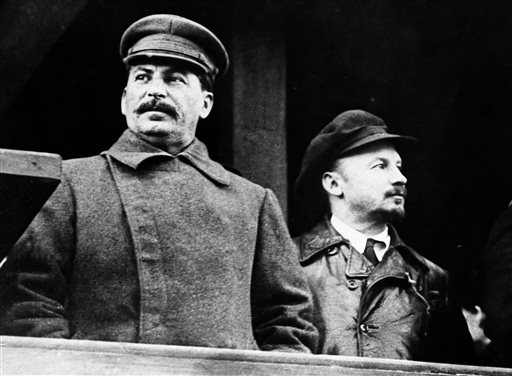PARIS - For people familiar with the way that dictators such as Stalin, Hitler and Mao methodically ousted their opponents, the purging and execution of the No. 2 official in North Korea is nothing new.
In recent history, Saddam Hussein also was skilled at such tactics to seize and consolidate his power in Iraq.
North Korea's execution of Kim Jong Un's uncle in the impoverished, closed and nuclear-armed country suggests that its leader has learned how to rule that way.
The execution of Jang Song Thaek, portrayed in North Korean state media as a morally corrupt traitor, rid Kim of one potential rival. It also may have been designed to sow fear among any others.
Here's a look at how some despots of yesteryear used purges to quash dissent and cement their lock-hold on power.
STALIN
Soviet leader Josef Stalin arguably set the bar on 20th-century totalitarianism. But it took him years to gain full control after the death of Bolshevik icon Vladimir Lenin. Stalin and his cronies set up show trials of the late 1930s to convict and execute potential rivals -- often with trumped-up charges and forced confessions. Nikolai Bukharin was shot for spying. Two other Communist notables -- Lev Kamenev and Grigory Zinoviev -- were executed as alleged conspirators of Leon Trotsky, Stalin's last and best-known rival. Trotsky was assassinated by an icepick to the head while he was in exile in Mexico in 1940. Stalin died in power 13 years later.
MAO
In China, Communist Party Chairman Mao Zedong led purges during the Cultural Revolution. Perhaps the highest-profile target was the longtime Chinese president and Communist revolutionary Liu Shaoqi. Young supporters of the Cultural Revolution known as Red Guards ransacked Liu's home, and he and his wife were dragged away for interrogation. Denied medical treatment as a "lackey of imperialism," Liu died in 1969 of pneumonia.
HITLER
In 1934, a year after the Nazis took power in Germany, Adolf Hitler carried out a purge of political and military rivals known as "The Night of the Long Knives." Among its victims was one of his top rivals, Ernst Roehm, the leader of the Sturmabteilung storm troopers, who was arrested and shot. A spinoff group, the SS became unchallenged and the most powerful instrument of Nazi power.
SADDAM
Saddam Hussein led at least two purges in Iraq. In 1968, the Baath Party regained power under the leadership of Gen. Ahmed Hassan al-Bakr, a distant cousin of Saddam. As his deputy, Saddam purged key party figures. Eleven years later, Saddam forced al-Bakr to resign -- and hundreds of Baath and military officials were executed.
IDI AMIN
In the early 1970s, erratic Ugandan dictator Idi Amin, who liked to have political prisoners hammer each other to death, reportedly appointed former Prime Minister Benedicto Kiwanuka as the African country's chief justice. But after a falling-out between the two men over Amin's alleged disregard for the rule of law, Kiwanuka was arrested and killed in September 1972, according to Uganda's government-run New Vision newspaper.

